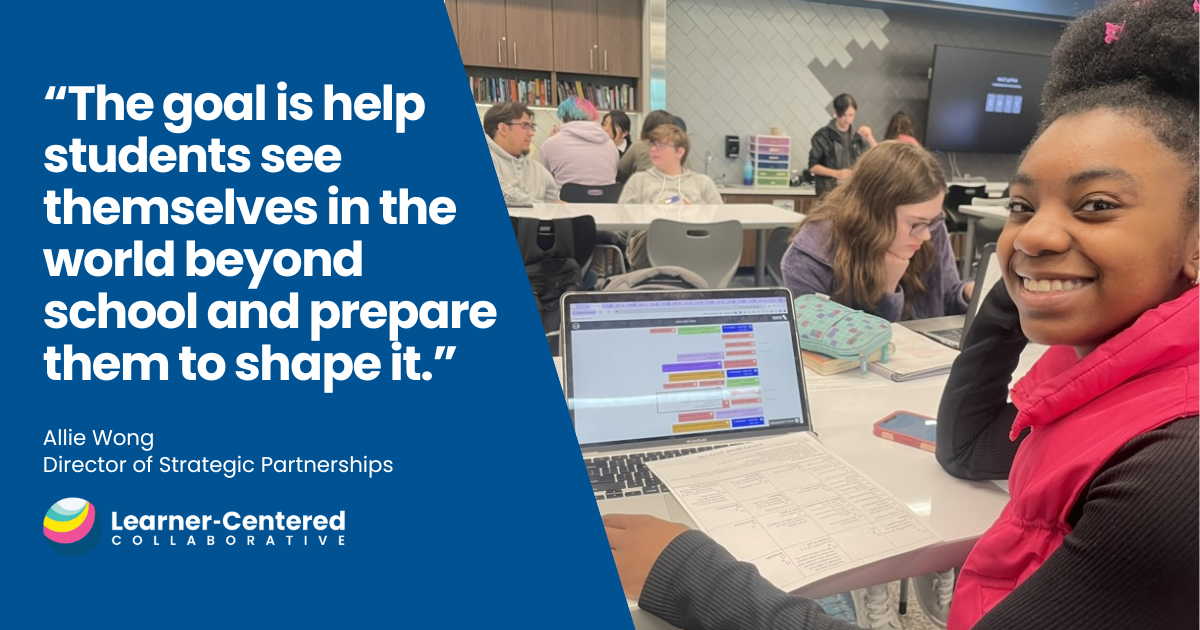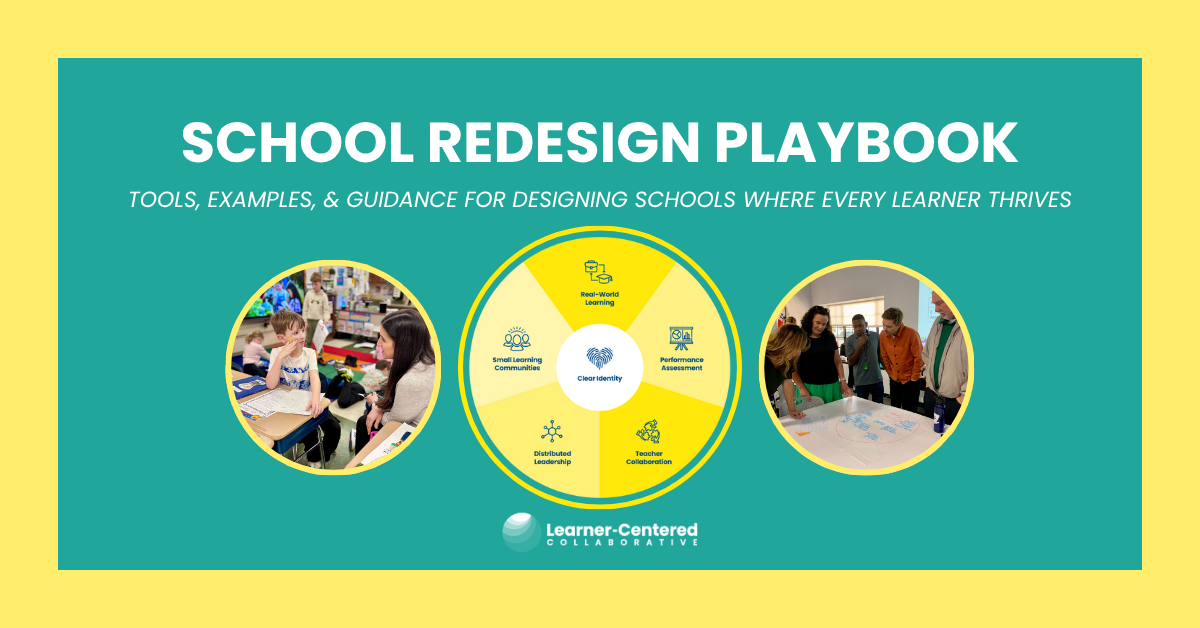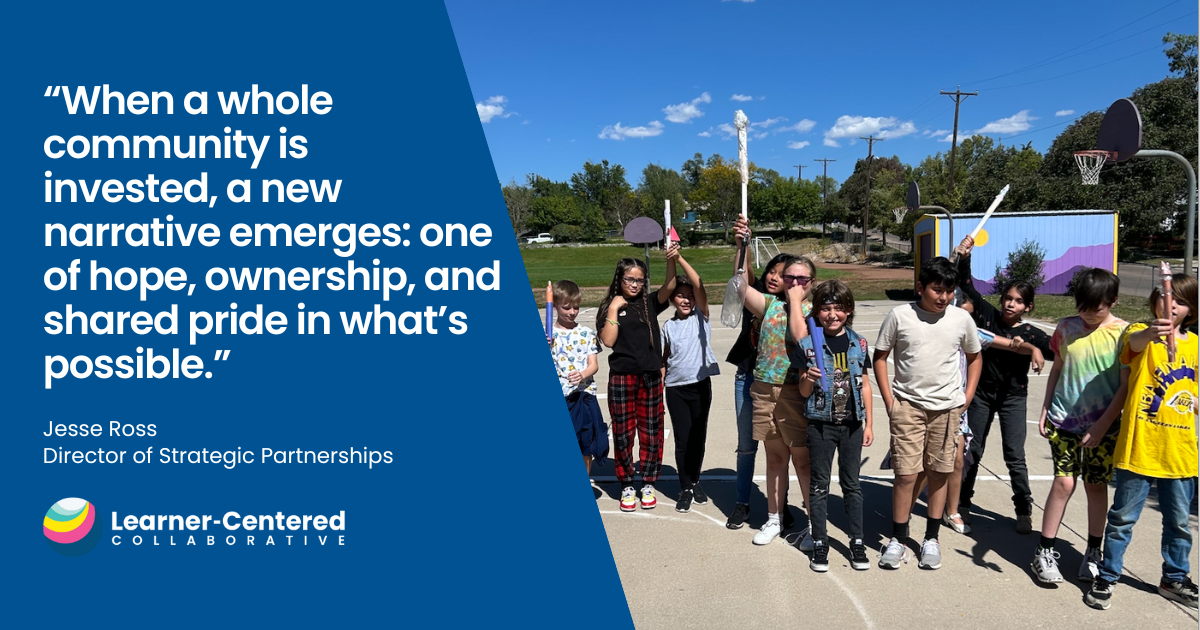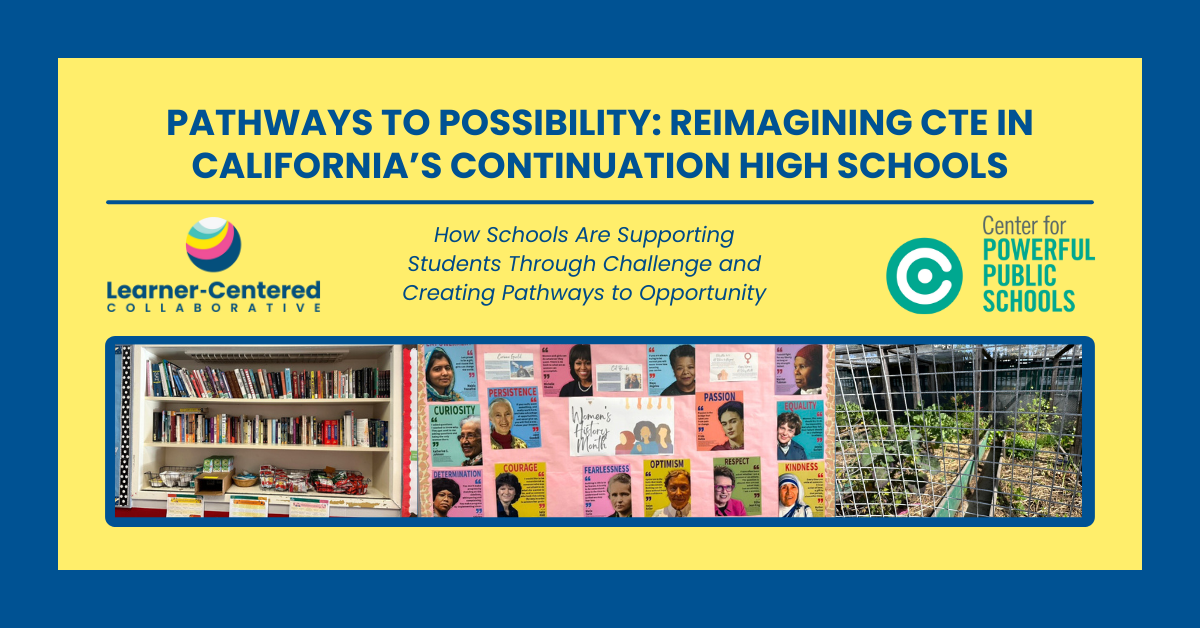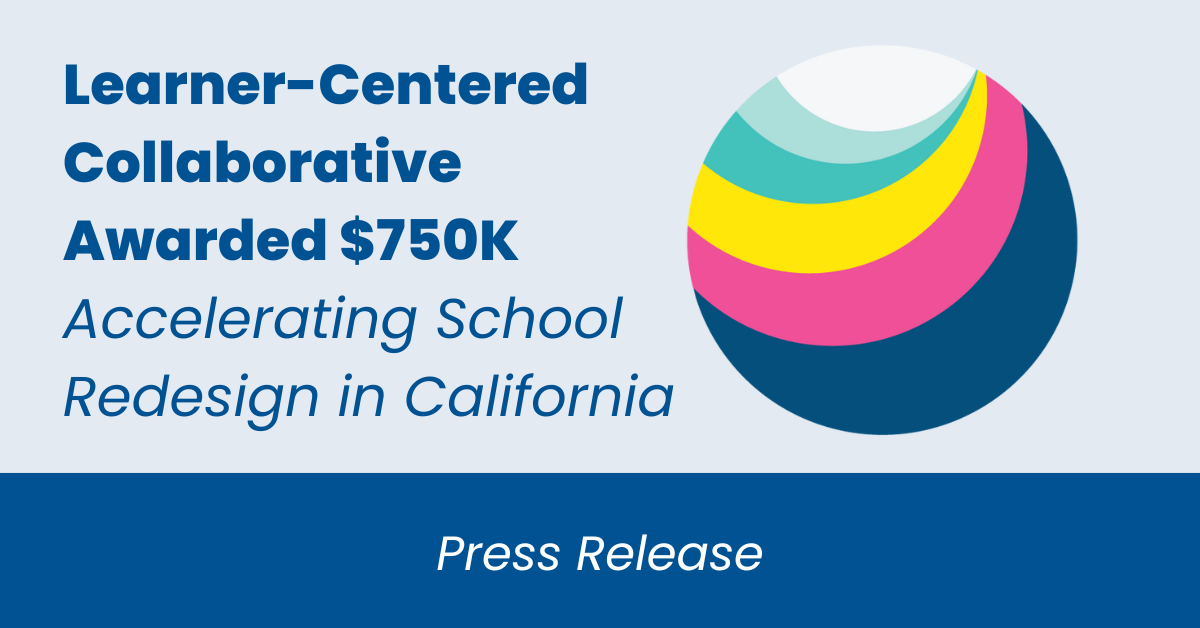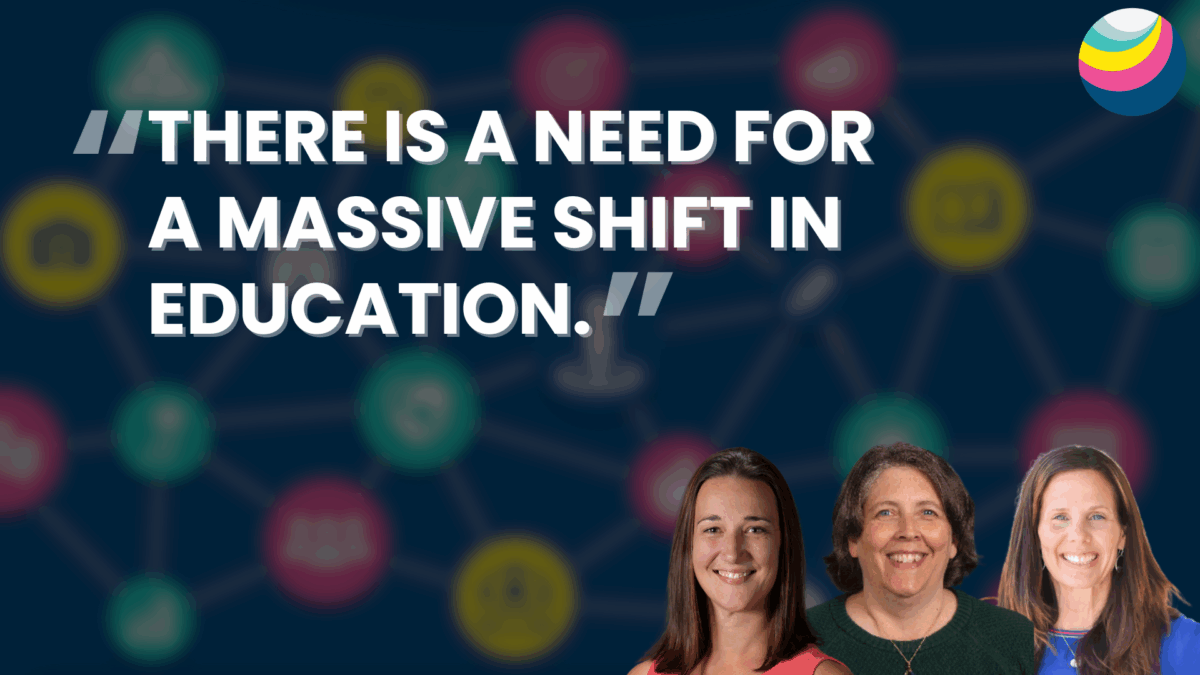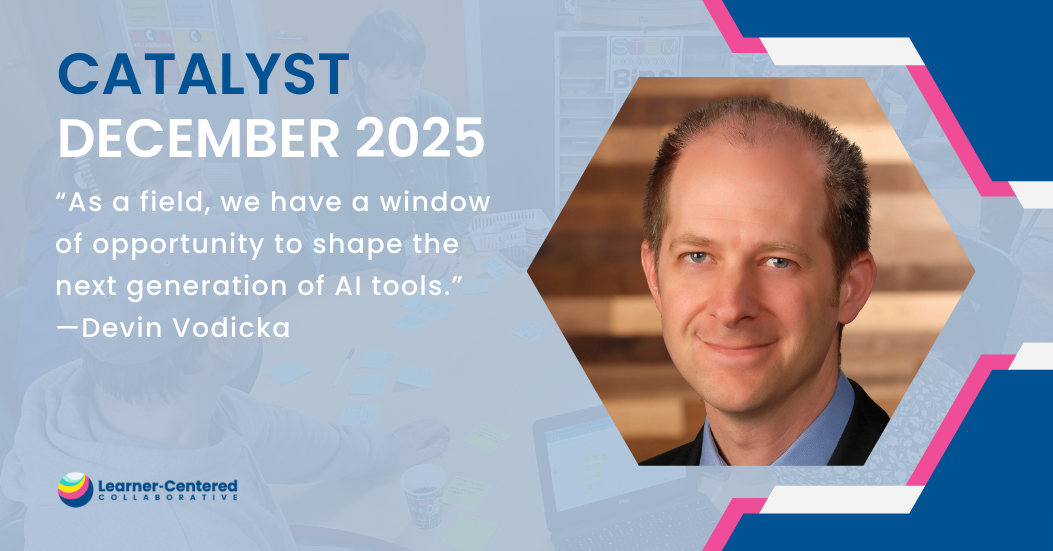Teaching Teams & Mixed-Age Cohorts
Overview
With a shift to learner-centered learning and in the age of AI, the role of the educator is also shifting and so are school-centered structures of one teacher teaching a group of students all the same grade level. This means roles are shifting beyond traditional boundaries where educators are also leaders and work in teams instead of silos. This form of distributed leadership is a key element of a learner-centered school design precisely because in order to make more learner-centered environments we must not only develop learner agency with students, but also empower educators to exercise agency. Team teaching models that highlight collaborative structures and emphasize quality over efficiency are also key to support learner-centered systems. It also allows for mixed-age cohorts of learners, which research has shown to have a positive impact on learning as learners take on different roles within the learning community.
Creating mixed-age cohorts allows students to learn from each other in unique ways while also building a range of interpersonal skills. These experiences enable younger students to learn from older students, give older students valuable leadership opportunities, and serve as community-building experiences across grade levels. Often, the makeup of these groups carries over year after year, which allows younger students to learn from peers and from experience and then pass on their learning. By incorporating explicit lessons on responsibility and leadership, students gain personal and interpersonal skills that translate both in and out of the classroom.
Montessori, Waldorf and Reggio Emilia programs often consist of mixed-age cohorting built into their academic model. Students receive personalized supports based on their age and needs through 1:1 as well as small group instruction and many of these schools leverage a playlist approach to support learners in working at their own pace. These mixed-age groups allow for learners to learn from others, serve as role models and access learning at their level rather than based on their age.
Other schools integrate mixed-age cohort experiences into electives, advising, student leadership groups or clubs, mentor programs and school-wide family models. Mixed-age electives facilitate social connection across a similar interest, while multi-grade leadership groups or clubs (e.g. Student Council) and mentor programs (e.g. 5th graders paired with 1st graders for a reading program) and advising groups help create a sense of community. These groups function more for community-building across the school.
Create team teaching roles
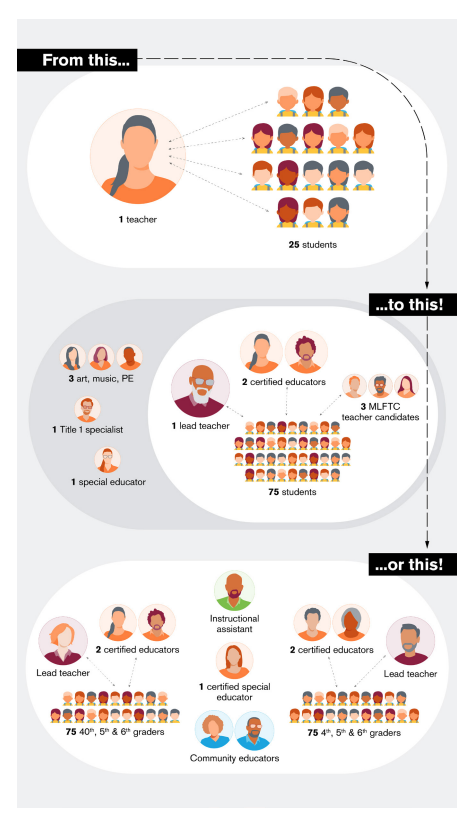
Source: Next EducationWorkforce ASU
Arizona State University’s Mary Lou Fulton Teachers College (MLFTC) works with schools and districts to rethink the role of the educator from being all things to many students to having specialized roles through team-teaching structures to support cohorts of students. They have also clearly defined the role of a “lead teacher” in a team-based structure.
Bright Spots
Leadership Groups
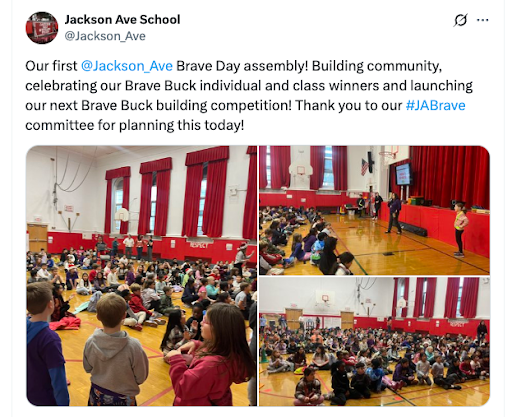
mage Source: Jackson Ave School on X
Third and fourth grade students opt into, BRAVE Committee, a cross-grade leadership group at Jackson Avenue Elementary School. Students act as ambassadors for the community similar to other Student Council groups, including leading tours of the school to visiting adults.
Cross Grade-Level Advisories
At High Tech High Mesa, Advisory groups include freshman to seniors, and the groups stay together for the four years of a learner’s high school experience. When freshmen join an Advisory, it is a celebratory arrival into the small group, and when seniors are preparing to graduate, it is a celebration of their accomplishments. The looping structure of advising allows students to build deeper relationships with each other year over year and is an opportunity for new students to learn from older students. Similarly, the adults on campus are also in their own advisory groups, helping to model for the students the benefits of a small learning community.
Mixed Age Real World Learning
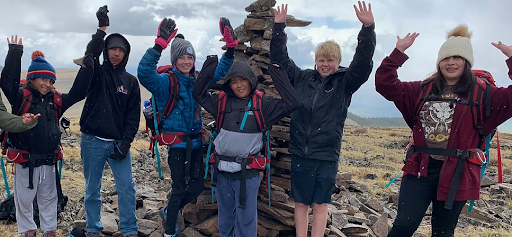
Image Source: La Luz Education
At La Luz in Denver, Colorado mixed-age learning is an important part of the school’s philosophy, fostering collaboration among 6th, 7th and 8th graders. Students engage in shared projects and community-based learning experiences, such as partnerships with local organizations like the Denver Zoo and History Colorado, where they learn together under the guidance of La Luz educators and community partners. Their approach encourages peer-to-peer learning, with learners offering support to each other based on their strengths regardless of age. This also allows educators the freedom to group learners based on skill development or social dynamics depending on the learning they are facilitating. By integrating mixed-age groups in real-world contexts, La Luz promotes leadership, empathy, and a strong sense of community among its students.
Cohorting Based on Skills Rather Than Age
By loading this video, you agree to the privacy policy of player.vimeo.com.
Students at Red Bridge, a K-8 school, are cohorted into autonomy levels that are defined by their capacity and drive to learn independently, rather than their age or traditional grade level. Students in generally similar age bands are grouped together for homeroom and projects, but during Deliberate Practice time each morning students work on their own personalized work in ELA and math and are pulled in personalized small groups, regardless of age or autonomy level.
Although students generally spend about 2 years at each autonomy level, they do not advance automatically at the end of a school year or at a specific cadence, but rather when they are able to demonstrate the required skills and work habits of the next level at regular intervals throughout the school year. Read more about their model to cohorting and competency-based assessment in Learner-Centered Collaborative’s Competency-Based Reporting Playbook.
Blending Cohorting Experiences with Multi-Age Experiences
At One Stone, a student-led non-profit with its own competency-based high school, students engage in learning experiences that are based on interest rather than the age or grade of the learner. In fact, students at One Stone’s Lab School don’t identify themselves as being part of a grade level. Instead, they refer to the year that they intend to graduate and the personalized interests that they are pursuing. While some learning experiences are reserved for those who are in their first year at One Stone, the vast majority of the workshops, design labs, project-based learning experiences, and advisory groups are made up of multi-aged cohorts. This approach allows One Stone to lean into its core belief in jagged learning profiles and provides students the opportunity to drive their own learning based on interest and passion, rather than birth date or grade level.
Create team teaching roles

Source: Next EducationWorkforce ASU
Arizona State University’s Mary Lou Fulton Teachers College (MLFTC) works with schools and districts to rethink the role of the educator from being all things to many students to having specialized roles through team-teaching structures to support cohorts of students. They have also clearly defined the role of a “lead teacher” in a team-based structure.
Questions to Consider:
- Where might mixed-age cohorts fit into existing structures and/or the school schedule? Where might we change the existing structures and/or school schedule to fit mixed-age cohorts?
- Where do we see the value in keeping students within their grade level (or similar age group or cohort), and where do we see an opportunity to vary their social experience?
- What are some lower-lift events that students can participate in as a mixed-age cohort in order to gain real-world experience?
- How might a multi-grade Advising or Family structure create a stronger sense of community among students and adults?
- How might we think about students being in multi-age groupings for academics? If not full time, could we consider small experiences such as shared math times across grade levels for mixed-age pull out groups or create a reading buddy program?
- Poll the students: What benefits do students see in being in mixed-age groups?
